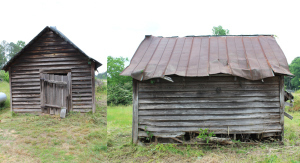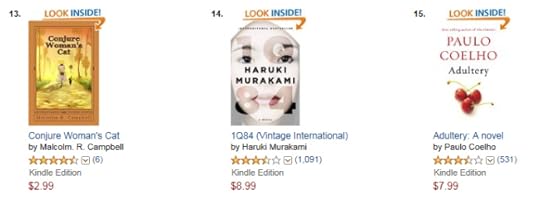Malcolm R. Campbell's Blog, page 204
May 28, 2015
Looking for lust in all the wrong places
While doing research for another short story that includes a few conjuring tricks, I came across a lust potion.
 Traditionally, a fair number of people stop by their local root doctor’s house for a little help getting lucky in love or gambling (which are pretty much the same thing, at times). While you can pick up powders and oils such as “Follow Me Boy (or Girl)” to persuade others to find you attractive, many practitioners don’t like tampering with a prospective lover’s free will.
Traditionally, a fair number of people stop by their local root doctor’s house for a little help getting lucky in love or gambling (which are pretty much the same thing, at times). While you can pick up powders and oils such as “Follow Me Boy (or Girl)” to persuade others to find you attractive, many practitioners don’t like tampering with a prospective lover’s free will.
It’s one thing to cast a spell to keep your spouse from cheating on you; it’s another thing to compel somebody to fall in love with you–that wouldn’t be true love, right?
This lust potion is powerful stuff. Heck, right after reading it and visualizing how it might work, I chanced to see a picture of the late Grandma Moses and my immediate reaction was, “Whoa, that chick is hot.”
Some writers have been criticized for, say, putting too many details in their work about how to cause death and destruction, that I feel I must say that causing lust in ones readers might be almost as dangerous.
Just as a responsible writer wouldn’t put the directions for making an A-bomb out of the stuff in a medicine cabinet, a merciful storyteller shouldn’t put the directions for causing lust in a story. Heaven help us if somebody rushed into a Walmart and sprinkled this stuff around or threw it out the car window on I-75.
Where would we be today if Jerry Leiber and Mike Stoller had listed the ingredients in their “Love Potion No. 9″ classic back in 1963? We know the stuff smells like turpentine, but (fortunately) dowsing oneself in paint thinner doesn’t cause amorous feelings in normal passersby. But thank goodness we don’t know the complete recipe.
So, I’ll mention the potion in the story without the recipe and let all my readers who are looking for lust in all the wrong places create their own opportunities. Oddly enough, the potion includes nutmeg. Using nutmeg by itself won’t cause lust, though it might make a person remember their favorite pumpkin soup.
–Malcolm
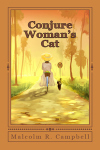 Malcolm R. Campbell is the author of Conjure Woman’s Cat, a 1950s-era novella about a black cat named Lena who helps her best friend do magic.
Malcolm R. Campbell is the author of Conjure Woman’s Cat, a 1950s-era novella about a black cat named Lena who helps her best friend do magic.


May 25, 2015
Day of memories
“These heroes are dead. They died for liberty – they died for us. They are at rest. They sleep in the land they made free, under the flag they rendered stainless, under the solemn pines, the sad hemlocks, the tearful willows, and the embracing vines. They sleep beneath the shadows of the clouds, careless alike of sunshine or of storm, each in the windowless Place of Rest. Earth may run red with other wars – they are at peace. In the midst of battle, in the roar of conflict, they found the serenity of death. I have one sentiment for soldiers living and dead: cheers for the living; tears for the dead.”
– Robert G. Ingersoll
 Many online images remind us that this is a day of memories, one that clashes with wishes for a “Happy Memorial Day” and with images of barbecues and shopping.
Many online images remind us that this is a day of memories, one that clashes with wishes for a “Happy Memorial Day” and with images of barbecues and shopping.
I served on an aircraft carrier. Please don’t thank me for my service today. Save those kind wishes for Veterans Day. Thank those who didn’t return for giving everything they had.
This is a day of reflection, I think. What do we have? Who helped us establish it and preserve it? Have we honored their sacrifice by doing the best we can to govern fairly within the scope of the Constitution? Were the wars that took their lives just and meaningful and necessary?
Difficult questions, I know, but more important that asking “Where can I get 25% off on my purchase of a new riding mower?”
Barbecue if you must, but don’t forget why you’re able to do it.
–Malcolm


May 23, 2015
Help Glacier Park track loons, goats and weeds
from NPS Glacier National Park
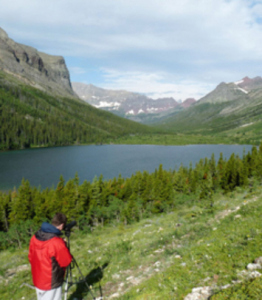
Crown of the Continent Research Learning Center Opportunities
The Crown of the Continent Research Learning Center at Glacier National Park will continue its Citizen Science Program this summer, offering free research and learning opportunities for the public.
The program trains individuals to identify, observe, and record information on mountain goats, bighorn sheep, pikas, aquatic insects, loons, and invasive plants in Glacier National Park. These species have been targeted because of their sensitivity to changes in habitat, human disturbances and, in the case of invasive plants, their threat to native biodiversity. Participants are asked to attend a one-day training session before collecting data for a project.
Common Loon Citizen Science
Gather information on the distribution and reproduction of common loons to understand more about population trends and nesting success. Glacier National Park is home to about 20% of Montana’s breeding Common Loons. Monitoring takes place May through September. Training Date: May 22, June 18, June 26, or July 9
High Country Citizen Science
Observe mountain goats, bighorn sheep, pikas, and aquatic insects at selected sites to assist with population and distribution estimates. These species are habitat and temperature sensitive and may be affected by climate change. Monitoring takes place June through October. Training Dates: June 12, June 19, or July 2
Invasive Plant Citizen Science
Learn to identify five targeted invasive plants and use GPS units to map their locations while hiking along trails in Glacier National Park. Monitoring takes place June through September. Interested invasive plant citizen science participants can be trained in one of two ways:
1. Complete online training session at http://www.crownscience.org/getinvolved/citizen-science/noxious-weeds.
2. Attend annual weed blitz on Tuesday, July 21. Participants will assist Glacier National Park by pulling targeted weeds.
Additional training sessions for any of the programs may be scheduled based on interest.
Since 2005, the Glacier National Park Citizen Science Program has utilized trained citizen scientists to collect baseline population data on species of interest within the park. Training is provided to participants to inform them of threats to native plants and wildlife that may result from human disturbance, climate change, and invasive species. Perhaps most importantly, the Citizen Science Program helps create an informed group of visitors involved in active stewardship of Glacier National Park.
Please contact the Crown of the Continent Research Learning Center at 406-888-7986 to register for training or for more information, or visit http://www.crownscience.org/getinvolved/citizen-science.
–
This is an excellent opportunity to learn more about the park while providing a valued service. Since our parks our underfunded, help is always needed, and this program gives people a chance to get involved, get hands-on experience and get the summer of a lifetime.
–Malcolm
 Malcolm R. Campbell is the author of The Sun Singer, a contemporary fantasy adventure novel set in Glacier National Park.
Malcolm R. Campbell is the author of The Sun Singer, a contemporary fantasy adventure novel set in Glacier National Park.
Campbell is a former Many Glacier Hotel bellman.


May 21, 2015
Letterman just took the last train to the coast
 In today’s here today, gone tomorrow world, I’m reminded of my age when I remember events, books, and TV programs that the mainstream youth culture has never heard of or considers ancient history.
In today’s here today, gone tomorrow world, I’m reminded of my age when I remember events, books, and TV programs that the mainstream youth culture has never heard of or considers ancient history.
Today, fewer and fewer people remember Dinah Shore and Steve Allen. Johnny Caron is fading into history. And now David Letterman has pulled the plug. If not the most popular, he was perhaps the most innovative and literate of the late night hosts.
His influence will be felt by people who’ve never heard of him. But that’s okay. After 33 years of sitting behind his desk, he’s bound to have had an impact. One wonders, will he escape the “scene” and fade away quickly like Carson or will we see his name as one of the voices on The Simpsons?
It was difficult to keep up with Letterman after a while because of full-time jobs and the need to get some sleep before sitting in a cubicle all day. Even when I didn’t see the show, I saw clips and felt a sense of things being right with the world knowing he was there with a new top ten list, some low-key satirical jokes, a new band, and some intentionally lame comedy bits.
A lot of notable people came and went on Letterman’s show. Everyone has their favorite interviews. But Dave was more than those interviews: he was middle America trying to make sense of everything outside middle America.
Don’t quote me on this, but Letterman shouldn’t have left even if (ultimately) he had to do the show from a hospital bed hooked up on life support, he should have stayed the course: “Tonight, Ladies and Gentlemen, the top ten reasons I’m still alive.” That would keep our link with the past up and running, making us feel better about ourselves and our world.
This isn’t the say the comedy died. Let’s just say that it’s changed and quite possibly that means the world as we know it is over. Change is a scary thing.
–Malcolm
Malcolm R. Campbell is the author of Conjure Woman’s Cat, a 1950s-era novella about Jim Crow, conjure and the klan in the Florida Panhandle.


May 17, 2015
The Falling Down Smokehouse Blues
That old smokehouse been fallin’ down,
Yes, that old smokehouse’s fallin’ down,
Seen wind and rain, babies born, babies grown,
Seen cotton, corn, and okra sown,
While roof and siding been fallin’ down.
When my wife and I had a house built on the site of her family’s original homestead, she became the 5th generation to live on property that’s been in the family since the 1880s. We moved here in January and found the site none the worse for wear for all the trucks, people, dumpster and piles of building materials that have been coming and going since last June.
We told the builder not to run over, back into, damage, knock down or even dent the old tractor garage, well house, and smokehouse. Along with the property’s one hundred year old trees, these remaining outbuildings represented the land’s history and the continuity of family over the years.
Several years ago, a tornado tore out one of the more ancient trees and, in the process, damaged the well house roof and the smokehouse. Now they have been repaired. We’re trying to stabilize everything old and restore a sense of “home” to this patch of ground, and that includes the two rose bushes we planted where my wife’s grandmother once had two rose bushes, and keeping watch over day lilies that bloomed this spring after spreading while people came and went.
Here are two BEFORE pictures:
Here are the two AFTER pictures showing the new door, two new corner posts, new siding and a new roof:
 Moving to this place has been–and continues to be–an adventure. We need more trees and shrubs in the yard, some fencing, a closer look at the well to see if we can get water from it again, and we need to finish unpacking things inside the house.
Moving to this place has been–and continues to be–an adventure. We need more trees and shrubs in the yard, some fencing, a closer look at the well to see if we can get water from it again, and we need to finish unpacking things inside the house.
But today, that old smokehouse no longer has the blues.
–Malcolm
Malcolm R. Campbell is the author of “Conjure Woman’s Cat.”


May 14, 2015
Review: ‘Lost Lake’ by Sarah Addison Allen
Lost Lake, Sarah Addison Allen (St. Martin’s Press, hardcover, January 21, 2014, paperback January 6, 2015), 304 pp.
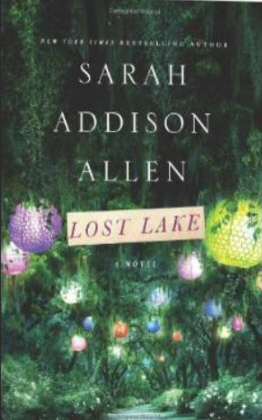 Kate Pheris is waking up after the worst year of her life, the year she lost her husband and almost lost herself while her young daughter Devin waited for life to begin again and her mother-in-law Cricket orchestrated their future like a puppeteer with an agenda stronger than love.
Kate Pheris is waking up after the worst year of her life, the year she lost her husband and almost lost herself while her young daughter Devin waited for life to begin again and her mother-in-law Cricket orchestrated their future like a puppeteer with an agenda stronger than love.
But older ties are stronger even though they might have seemed forever lost.
Kate and Devin serendipitously discover a fifteen-year- old postcard in the attic while getting ready to move to Cricket’s house where neither of them wants to be: Greetings from Lost Lake, Georgia: a Magical Experience. Sent by Kate’s great-great-aunt Eby after Kate’s best summer ever at the ramshackle cabins our of another era in South Georgia, the card stirs up old hopes and memories.
Kate’s never seen the card before. Her mother, who had a falling out with Eby that summer, hid it away along with its message, “You’re welcome to come back anytime you’d like.”
It’s too late, isn’t it? Lost Lake and Eby are probably long gone. Yet, Lost Lake really isn’t that far from Atlanta. What if Kate and Devin drive down there and look?
While Cricket organizes the future she wants with indomitable and merciless force, Lost Lake suggests possibilities with a gentle touch, one that pulls on the heartstrings of those who have come back for one last summer before Eby sells the place she can no longer afford to keep and flies away to see the world.
The book features a cast of memorable characters and–inasmuch as this novel is magical realism–a magical setting. Everyone who arrives to say goodbye to Eby and Lost Lake is looking for something, and they all have their secrets and their losses.
Like an oasis that’s almost visible for one moment and gone the next, the magic and the synchronicity of the setting are deftly handled by Allen (Garden Spells The Sugar Queen, The Girl Who Chased the Moon, The Peach Keeper), adding mystery and, perhaps, a sense of hope that a seemingly lost future is not altogether lost.
One cannot read Lost Lake without noting a certain predictability in the plot and the syrup of sentimentality it the developing themes and coming-out-of-hiding histories of the characters. One can say the same thing about It’s a Wonderful Life. Nonetheless, movie viewers return to It’s a Wonderful Life every year at Christmas just as the faithful, if not aging, guests return to Lost Lake every summer.
Lost Lake gives those guests what they’re looking for even though most of them are too stubborn to admit it. Readers may know, or think they know, how Kate’s and Devin’s summer at Lost Lake will end. They may be right. Even so, the book casts a spell that’s impossible to resist.
–Malcolm
 Malcolm R. Campbell is the author of the magical realism novella “Conjure Woman’s Cat,” set in the Florida Panhandle where folk magic lives deep in the piney woods.
Malcolm R. Campbell is the author of the magical realism novella “Conjure Woman’s Cat,” set in the Florida Panhandle where folk magic lives deep in the piney woods.


May 11, 2015
How to destroy the pacing of your story
 Novelists trick us in multiple ways in order to ramp up the suspense of a story. Important facts are concealed, backstories aren’t revealed, and point of view is shifted from one character to another keeping readers outside the head of the person whose thoughts would reveal important clues.
Novelists trick us in multiple ways in order to ramp up the suspense of a story. Important facts are concealed, backstories aren’t revealed, and point of view is shifted from one character to another keeping readers outside the head of the person whose thoughts would reveal important clues.
One trick annoys me, probably annoys others, and disrupts the pacing of the story. Let’s call this “hurry up and wait.” Here’s an example:
The Bomb
Joe opened the suitcase. There is was: enough C4 to level the building and a timer with ten seconds left in the countdown. The timer was old, sounded like a plastic clock.
The tick tock, tick tock reminded him of summer evenings at the lake when Dad not only woke him at the crack of dawn, but kept him awake most of the night with a loudly ticking alarm clock. Every time it woke him, he lay there waiting for it to go off in an explosion of bells and sunshine. Before the left the old cabin, he threw that darned clock in the lake, hoping a gator might eat it. He had to smile in spite of the bomb in the suitcase. If Dad were alive and sitting here next to him, he would love the sound of that timer.
When a story is racing toward a critical moment, stopping the action for an absurd reason cheats the reader, for it builds tension where there should already be enough tension to cover the action. In this example:
No sane person faced with a bomb with just seconds to defuse is going to walk down memory lane in his thoughts. He will run, throw the bomb out a window, or defuse it.
Some novelists don’t pay attention to the time it takes a reader to read a passage. I always note it. In this case, the bomb will explode before Joe finishes his thoughts about the lake and the clock simply because the thought takes more time than he has.
A similar sin, somewhat less grievous, is the insertion of backstory information into a scene where, in reality, there’s no time for it. Now, if you’re a reader or a writer who isn’t concerned with the amount of time thoughts and memories take to occur, this won’t bother you as much as it bothers me. Consider this:
The Highway
Sue lit another cigarette and blew the smoke out the open window of the car. Goodness knows, she was driving fast enough for the wind to draw everything out the window including her soft voice, her hair and the gnats that took over the car while they were parked at a rest stop.
“What are we going to tell our parents when we get there,” she asked.
“If you’ll slow down,” said Jim, “we’ll have more time to come up with an elaborate lie.”
She laughed, looked at him sideways, and punched his shoulder gently.
“I’m eight months pregnant,” she said. “What kind of elaborate lie do you propose.”
Other than how she happened to get pregnant, Sue was forever practical. He preferred jokes and delays and white lies. If he could think of a real whopper, he would resort to that. This road was a highway of lies because it connected their hometown with the beach cottages. Things happened at those cottages. Always had. The road home, lined with saw palmetto and scrub oak and a few longleaf pines, was a fertile ground for fibs, large and small. They literally fell out of the trees. If they’d been fish, they would have jumped into his boat. Sue felt uncomfortable with lies. That’s why she drove down this road faster than the law allowed.
“You’ve been overeating,” he suggested.
Okay, maybe there’s some relevance in the fact Jim uses the road as a time and place for covering up whatever he did at the beach.
Nonetheless, this diversion destroys what was developing as a back-and-forth dialogue of short sentences. The pace one can create with that kind of dialogue gets derailed with the intrusion of a giant paragraph of information.
Plus, I feel like asking the author exactly what Sue is doing while Jim has this multi-sentence thought. Yes, sooner or later such conversations have to end. But not before they’re naturally over.
Pacing can help a writer’s work or destroy it. Sometimes, it’s a matter of personal taste. If you read your stuff aloud, you’ll hear the pacing as surely as you hear the rhythm of a song on the radio. The pace not only needs to feel right, it needs to make logical sense. I think it’s illogical for a man defusing a bomb to think about something else, and I think most people having a conversation would be saying “Jim, Jim, Earth to Jim” before Jim finished his thoughts about the road and the lies he found on it.
Pitch-perfect pacing keeps the thrills in your thriller.
My two cents for a Monday afternoon.
–Malcolm


May 7, 2015
How can you not love a great city park?
“One of the most important but least recognized essentials to an attractive and healthy urban environment is a well-designed and well-maintained network of city parks���an essential component of any city���s infrastructure. Parks support public health, the economy, the environment, education, and community cohesion. They are also critical to workforce development, particularly green career tracks. Parks make our cities sustainable, livable and vibrant.” – City Parks Alliance

Mission Dolores Park, San Francisco – Wikipedia photo
Do you have a favorite city park?
I remember the parks of my childhood, Winthrop and Myers in Tallahassee, Florida; Nelson and Fairview in Decatur, Illinois; and Golden Gate in San Francisco.
If you’re a New Yorker, perhaps Central Park or Union Square Park or Bryant Park fits your style. In Boston, perhaps you stroll about the Boston Commons.�� In San Francisco, you may like Mission Dolores Park–I do, I once had an apartment next to it. Forest Park in St. Louis has a lot to offer as does Griffith Park in Los Angeles.

Forest Park, St. Louis – “Help sustain Forest Park as it sustains us all.” – Forest Park Forever
Many of us enjoy little pocked parks whose names aren’t well known outside their neighborhoods. Some of them are great for lunch with business associates; others appeal to dog owners and their pets; and some feature swings and green space for children.
Every time I receive a copy of “land + people,” the publication of the Trust for Public Land, I smile. Why? This magazine is a celebration of parks. New Parks being created. The latest innovations. Spotlights on trends and recent park ideas.
Some people criticize parks because they cost money, attract noise and/or “the wrong kind of people,” or create headaches when those who built them cannot afford to maintain them.

Griffith Park, Los Angeles – Wikipedia photo
Aside from quality of life (as in beauty, play and relaxation), parks generally increase nearby property values, reduce hardscape, aid wildlife and increase the city’s tree canopy. Or, as the Trust for Public Land puts it, “We believe that everyone should have the opportunity to connect with nature. And as research clearly shows, access to nature is an essential prescription for the physical, environmental, social, and economic health of a community.”
I recently saw a link on Facebook to doctors who were prescribing time in a park for some of their patients. Many of the comments were along the lines of “about time.” Unlike some of the medications we’re given, park addiction is a habit we can live with. We’re hard pressed to live without it.
The current issue of “land + people” includes a photograph from Knight’s Pond in Cumberland, Maine, of a boy in old clothes walking along the shoreline with a net. The cutline reads, “Dragonflies and salamanders, fish and frogs–who knows what the day’s exploration will turn up. Every kid needs a place to discover the natural word.”
I like that. It reminds me of long childhood days. And it reminds me, too, that discovery of the natural world leads to respect.
–Malcolm
Malcolm R. Campbell is the author of “Conjure Woman’s Cat,” a 1950s-era novella set in the piney woods of the Florida Panhandle he discovered as a child. Thank you all for your support of this book:


May 3, 2015
Wondering why people click on what they click on
When I blogged about the USS Ranger, the Glacier National Park Centennial and the White House Boys (at Florida’s Dozier School), I wasn’t surprised to see lots of folks stopping by to read those posts while the stories behind them were in the news.
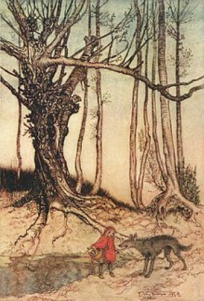
Arthur Rackham’s 1909 illustration for “The Fairy Tales of the Brothers Grimm”
Then, when there was suddenly an upsurge of interest in those posts, I often found out I’d missed a news event and people were out looking for information again. So then I updated the posts and even more people read them!
Of course, there are always those posts I write, thinking they’ll be popular and nobody reads them. Shows what I know!
It’s kind of fun trying to figure out why people read what they read. If I knew the answer to that question, I’d probably write more follow-up posts and get some real conversations going in the comments section.
This summer marks the 100th anniversary of Many Glacier Hotel in Glacier National Park. Along with various centennial events, there will be an employee reunion which–sorry to say–I’m not able to attend. Perhaps this is why I’m suddenly getting more hits on my 2011 post Many Glacier Hotel 1963, where the fantasy began.
I figure there must be some Floridians following this blog, or possibly people planning a trip there, because I randomly get slews of hits on some of my “On Location” posts about locations in the panhandle such as Location Settings: The Other Florida, featuring Panacea and St. Teresa. I’ve written a lot about Florida settings and, since most of them are in the panhandle rather than the primary tourist sections of the state, it’s nice to see people stopping by to read them.
Reader interest in old book reviews comes and goes, quite often when the author of a book I reviewed has released something new.

Long-ago days
The hits on one post, though, really have me puzzled. The highest readership week after week is going to my June 2013 post The Bare-Bones Structure of a Fairy Tale. In fact, that post has taken over from the White House Boys as the most-read post in the history of this blog. But why? I have no idea. I like fairy tales, myths, and legends: that’s why I wrote the post. I figured nobody would notice it because fairy tales are not exactly breaking news or high on the list of things that are trending on Yahoo, Twitter and Facebook. If you’re one of the people who read that post, what were you looking for?
This really isn’t a niche blog, though it generally has to do with books, writing and the things that catch my fancy. If the NSA is tracking me here, it probably knows more about this blog than I do, what with the various algorithms around for weighing how much space has been devoted to one subject or another.
Whatever prompts you to stop and read, I appreciate it. Hang in there as I bounce all over the spectrum. I’m working on another hoodoo related book, so that means you might be finding out more about folk magic than you want to know. (I spent the morning researching possum bones, but I think I’ll spare you the details of that.)
–Malcolm
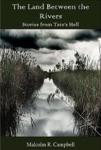
Free on Kindle Unlimited
Malcolm R. Campbell is the author of The Land Between the Rivers, the three-story set of folk tales about Panther, Bird and Bear, the first animals (according to the Seminole creation myth) to walk upon the earth. It’s set in Tate’s Hell Swamp in the Florida Panhandle.


May 1, 2015
Your state’s goldmine of folktales
Folklore is “the boiled-down juice of human living,” Zora Neale Hurston believed. It’s potent stuff and most stories have multiple versions that have been adapted by storytellers to fit the places where they live and the audiences listening to the story.
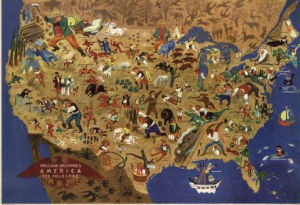
William Gropper’s America, its folklore
We often equate the word “myth” with the word “lie” and likewise the word “legend” with the word “superstition” or, perhaps, an ill-informed version of “the real history that actually happened.” I prefer Paula Gunn Allen’s view that myth “is an affirmation of self that transcends the temporal.”
Folklore, whether it’s a creation myth or an often told foundation story brings us, even in a world of science and technology, an alternative, somewhat unconscious and strongly symbolic account of how things came to be the way they are.
When writing about the people who live in a real-life location, I feel ignorant of the place until I read its folklore. These stories tell me a lot about the people and their customs. While many have made careers studying and collecting folklore and comparing that found in one place to that found in another, fiction writers can quickly focus in on some of their states’ basic stories simply through Internet searches like “Montana Ghost Stories,” “New York Legends,” and “Florida Folklore.”
Or, to get a jump start, you can go to American Folklore where you’ll find tall tales grouped by type and by state. You’ll find a diverse array of material by searching for folklore on the Library of Congress’ American Memory website. Similar searches on bookseller sites like Amazon will turn up useful stories as well. If your focus is a specific town, it will usually have a historical society with a local history and/or professional and amateur websites where a mix of history and legend can be found–such as this one for Two Egg, Florida. Many such sites have lists of helpful links.
If you delve into stories about Florida, for example, you’ll discover the skunk ape, a man named Uncle Monday who could turn himself into an alligator and a haunted bridge where a bride in a burnt wedding dress was supposedly seen for years.
The gold in the south isn’t the supposed Confederate Gold, it’s the stories, real, imagined and symbolic. Your town and state also have hidden wealth behind the modern buildings and high-speed Interstates: you can find it at those exits that are badly marked or that are overgrown with weeds due to infrequent use.
I didn’t learn very muck about local folklore in school because when it came up at all, it was always something from the brothers Grimm. Good stuff, that, and universal as well. Yet I cannot help but think that when it comes to legends and tall tales fit to give more to a neew story or novel, that it’s always best to “buy local.”
–Malcolm
Many thanks to all of you who helped make my April 30th “Conjure Woman’s Cat” book sale a success:




